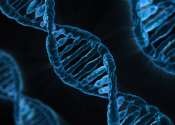New target identified for repairing the heart after heart attack
Billions of cardiac muscle cells are lost during a heart attack. The human heart cannot replenish these lost cells, so the default mechanism of repair is to form a cardiac scar. While this scar works well initially to avoid ...
Jan 30, 2020
0
115








